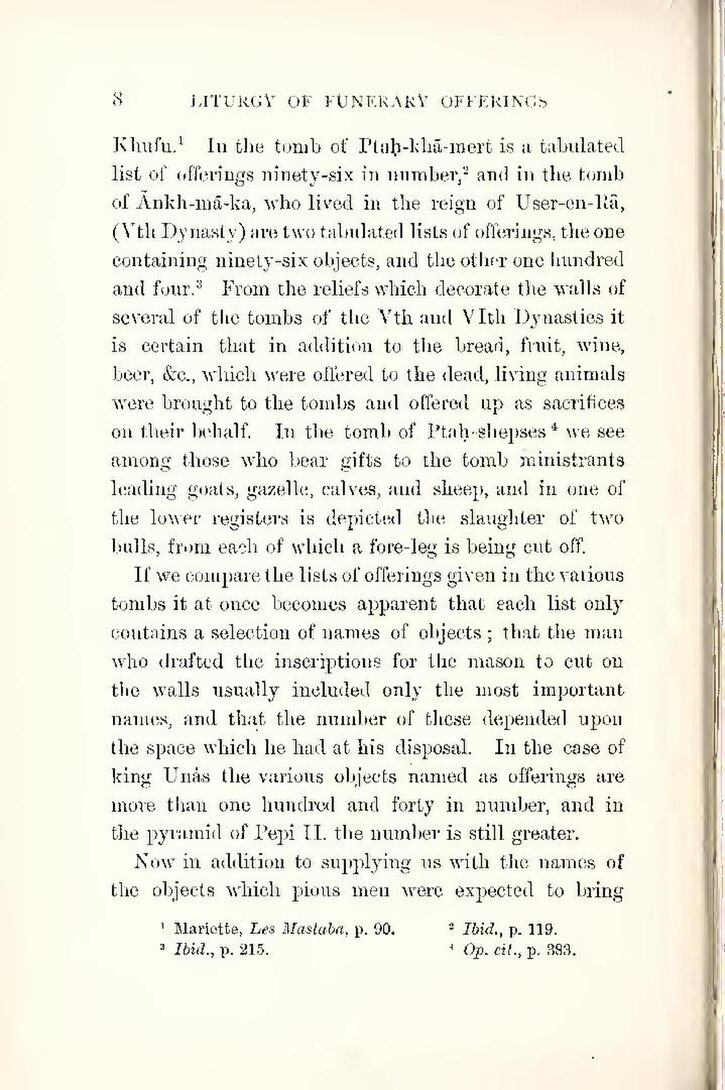Khufu.[1] In the tomb of Ptaḥ-khā-mert is a tabulated list of offerings ninety-six in number,[2] and in the tomb of Ānkh-mā-ka, who lived in the reign of User-en-Râ, (Vth Dynasty) are two tabulated lists of offerings, the one containing ninety-six objects, and the other one hundred and four.[3] From the reliefs which decorate the walls of several of the tombs of the Vth and VIth Dynasties it is certain that in addition to the bread, fruit, wine, beer, &c., which were offered to the dead, living animals were brought to the tombs and offered up as sacrifices on their behalf. In the tomb of Ptaḥ-shepses[4] we see among those who bear gifts to the tomb ministrants leading goats, gazelle, calves, and sheep, and in one of the lower registers is depicted the slaughter of two bulls, from each of which a fore-leg is being cut off.
If we compare the lists of offerings given in the various tombs it at once becomes apparent that each list only contains a selection of names of objects; that the man who drafted the inscriptions for the mason to cut on the walls usually included only the most important names, and that the number of these depended upon the space which he had at his disposal. In the case of king Unȧs the various objects named as offerings are more than one hundred and forty in number, and in the pyramid of Pepi II. the number is still greater.
Now in addition to supplying us with the names of the objects which pious men were expected to bring
